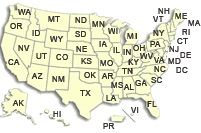Minnesota Water Science Center

Emerging Contaminant and Endocrine StudiesMinnesota PROJECTSUSGS IN YOUR STATEUSGS Water Science Centers are located in each state. 
|
Endocrine Disruption in Common Carp in Minnesota StreamsThe presence of endocrine disruption compounds (EDCs) was determined in selected Minnesota streams using biological characteristics (measures of endocrine disruption) of common carp (Cyprinus carpio) exposed to wastewater treatment plant (WWTP) effluent and runoff from agricultural and forested land. Four biological characteristics of common carp were used as indicators of EDCs in the streams selected for this study: (1) high concentrations of vitellogenin in male fish and low concentrations in female fish, (2) high or low plasma concentrations of the sex steroid hormones (17β-estradiol and 11-ketotestosterone),
The presence of EDCs in selected Minnesota streams was indicated by biological characteristics in common carp. Biological characteristics used in this study identified WWTP effluent as a potential source of EDCs. Additionally, fish located at sites upstream of WWTP effluent primarily draining agricultural land show indications of EDCs, which may be the result of agricultural runoff or other sources of EDCs. Differences among sites may be due to differences in water chemistry or fish exposure time. This study and others indicate the presence of EDCs in surface water and the potential signs of endocrine disruption in resident fish populations. PublicationsLee, Kathy E.; Blazer, V. S.; Denslow, N. D.; Goldstein, R. M.; Talmage, P. J., 2000, Use of biological characteristics of common carp (Cyprinus carpio) to indicate exposure to hormonally active agents in selected Minnesota streams, 1999, US Geological Survey Water resources Investigations Report 2000-4202, 47p. |